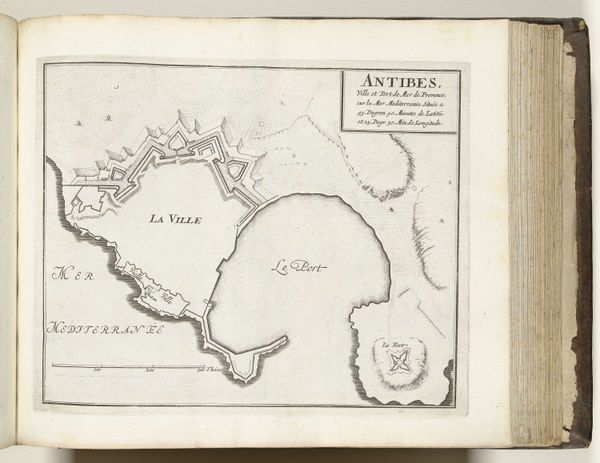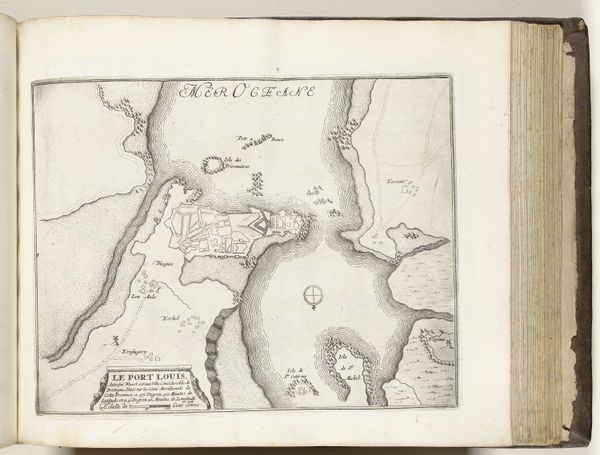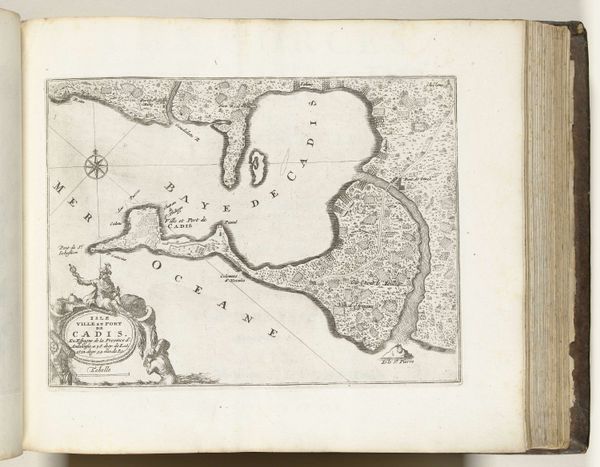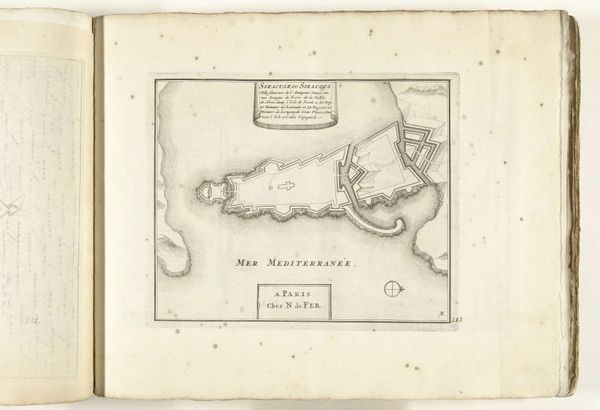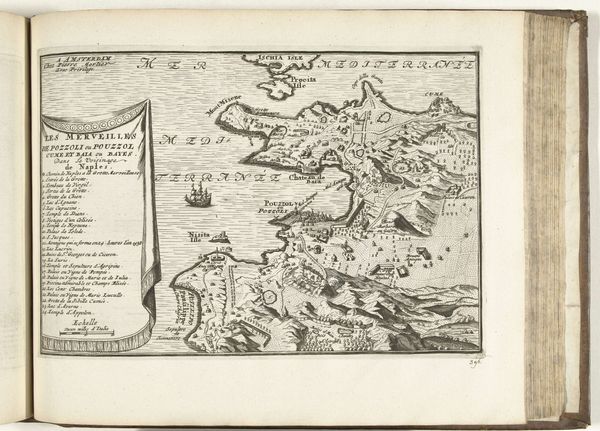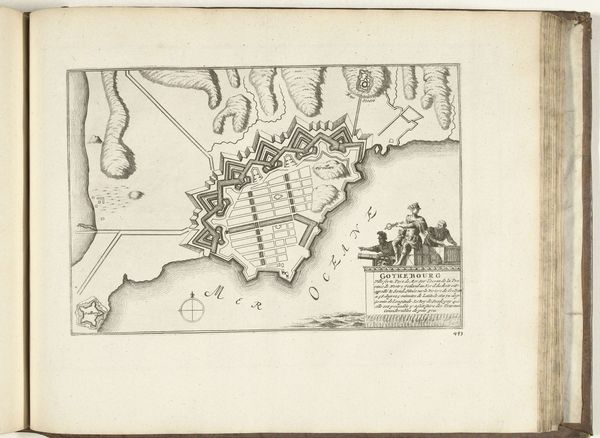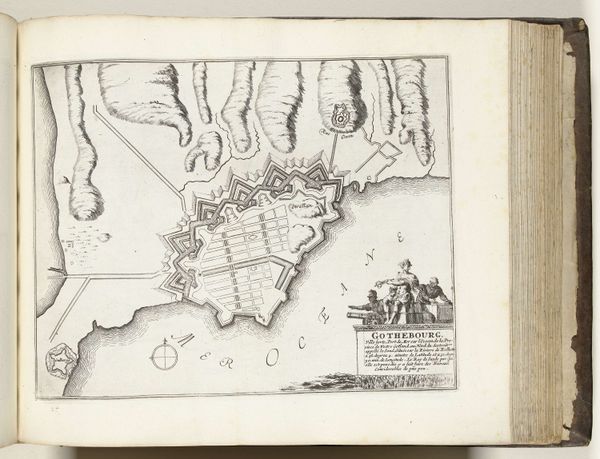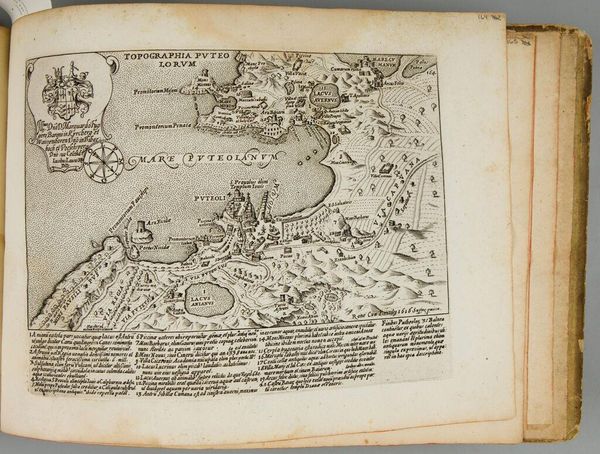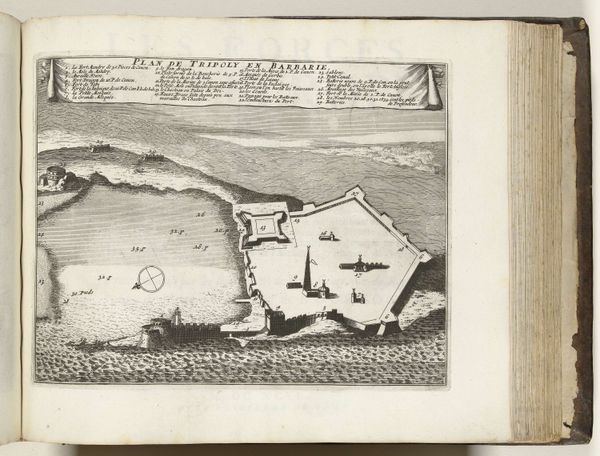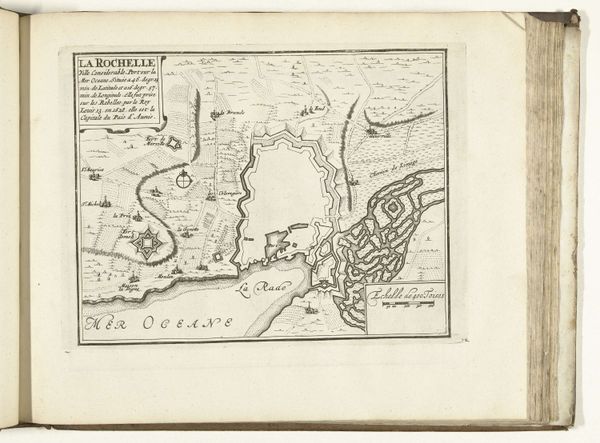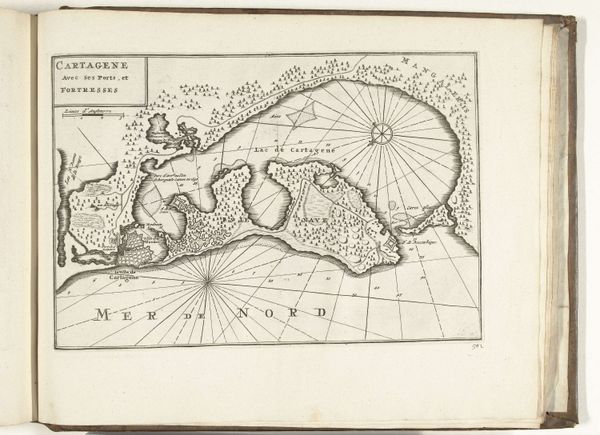
drawing, paper, ink, pen, engraving
#
drawing
#
baroque
#
landscape
#
perspective
#
paper
#
ink
#
coloured pencil
#
geometric
#
pen
#
cityscape
#
engraving
Dimensions: height 213 mm, width 283 mm
Copyright: Rijks Museum: Open Domain
Curator: Here we have an intriguing find: an antique map titled "Plattegrond van Siracusa," created around 1695. It's currently held here at the Rijksmuseum. Editor: It looks like an architect's plan and immediately evokes a sense of control and defense, even paranoia. All those stark lines, the detailed fortifications hugging the coast. You feel how material considerations, shaping the physical land, become defenses in conflict. Curator: Indeed. This work is most likely an engraving rendered in ink, which was not only an exact and repeatable medium, but in this case would serve a crucial purpose. Maps were, and still are, vital for strategic military purposes. Syracuse, with its crucial port, would have been of major geopolitical importance. Editor: Precisely, it's the kind of detailed urban plan demanded by early modern rulers with ambitions of territory and resource extraction. Just consider the skilled labor of those draftspeople needed for creating the detailed technical renderings. What paper was available and where were the workshops these engravers toiled in? Curator: I'm struck by the small, illustrative figures at the bottom - adding a flourish to what could have been purely utilitarian. They suggest the map's ambition goes beyond military application into a realm of civic pride and perhaps, a demonstration of power, even propaganda. The museum here aims to recontextualize these artifacts, prompting discussion and questioning of the underlying historical narratives, just like that ambition. Editor: Those figures are fascinating! Though the classical figures may hint at Syracuse's noble past, what are the working conditions of the map makers themselves? Paper was expensive at this time. Who exactly was involved in this means of production, this careful choreography of labour, technique, material to create a status symbol. Curator: A worthy point. It underscores how access and privilege are subtly encoded within these seemingly straightforward historical documents. Thinking about the production reminds us to consider who is included in the visual narrative, and, importantly, who isn’t. Editor: I'll leave here with that sharpened awareness. Thinking about both the presented and unacknowledged laborers of our cities seems an essential thread of the artwork's significance across time.
Comments
No comments
Be the first to comment and join the conversation on the ultimate creative platform.
